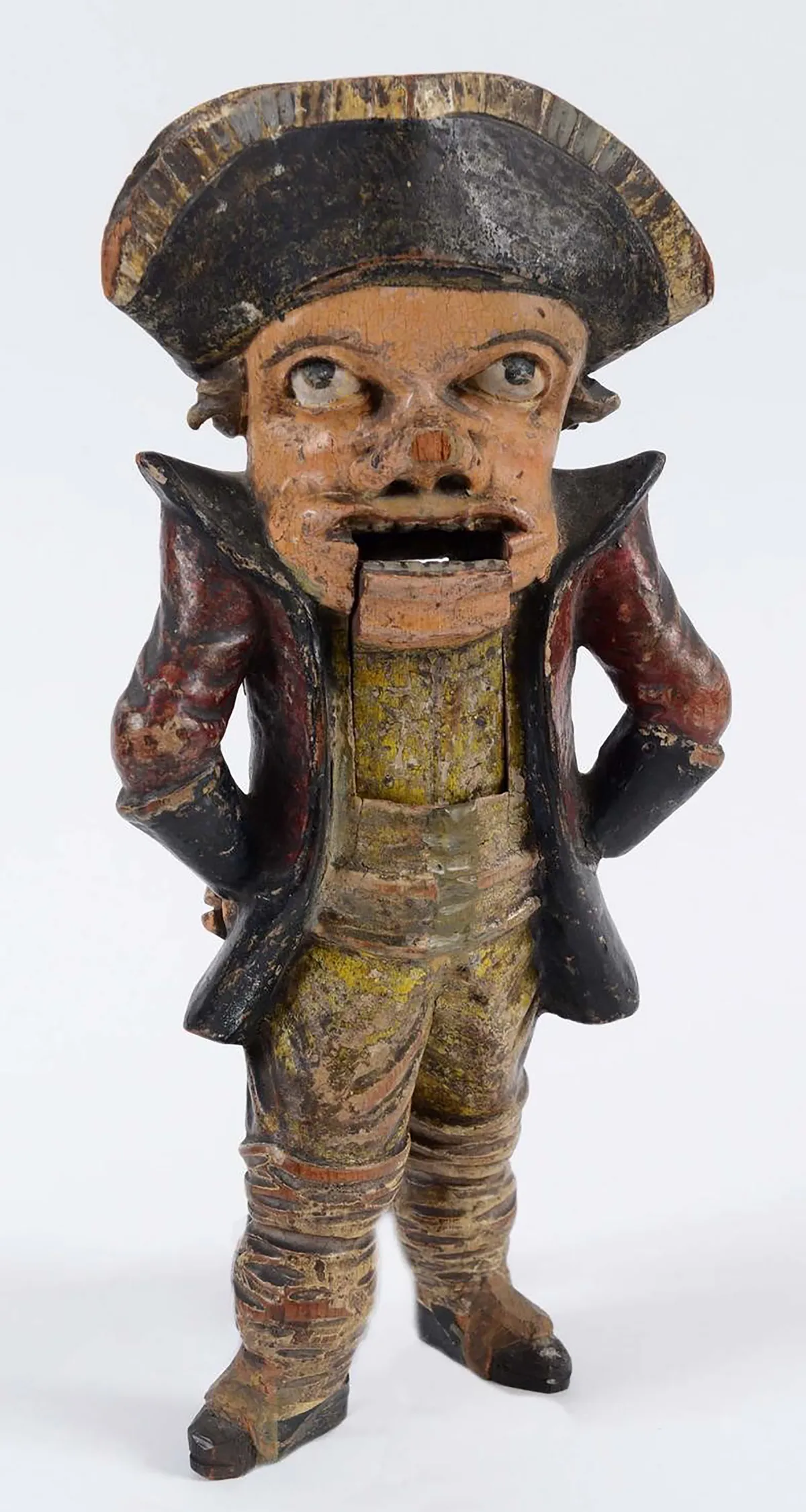In Tchaikovsky’s delightful Christmas ballet, The Nutcracker, a wooden nutcracker comes to life on Christmas Eve, turning from a children’s toy into a handsome prince. The humble nutcracker’s association with Christmas is a relatively recent phenomenon; nutcrackers have been with us for thousands of years. Nuts have formed part of the human diet since prehistory: stones, used for cracking open nuts, have been found in archaeological excavations dating back 4,000 to 8,000 years.
The National Archaeological Museum of Taranto, Italy, holds the earliest known nutcracker in its collection; shaped as two clasped hands in bronze and decorated with serpentine bracelets in gilt, it’s an object of extraordinary quality and beauty. Historians date it to the third or fourth century BC. Ancient nutcrackers were made from metal and operated bya hinge movement.
When were nutcrackers invented?
In the late 14th century, Jeanne d’Évreux, Queen of France and Navarre, refers to a ‘device in silver for breaking nuts worth nine Francs’. And by the 15th and 16th centuries, English and French craftsmen were carving nutcrackers in wood, often from boxwood: a versatile, oily wood suitable for the fine art of ‘treen’. Henry VIII is also said to have given his second wife Anne Boleyn a nutcracker.

Today, nutcrackers tend to be associated with Germany, especially the region of Erzgebirge (in English, the Ore Mountains) in the former East Germany, where you can still buy them today. The area was known for the mining of precious metals. During the 17th century, silver deposits ran out, and the former miners turned to woodworking to survive. The region became famous for its toys and souvenirs in wood.
By the 18th and 19th centuries, carvers in Germany, Austria and Switzerland made nutcrackers in the shape of animals and human faces. In German folklore, nutcrackers bring good luck, ward off evil spirits and protect the home. Traditionally, nuts are associated with Christmas too: as Judith Flanders says in Christmas: A Biography, ‘Now Santa put toys, fruits and nuts in the stockings of good children, while bad children got coal...’
You might also like collecting antique honey pots
But by the 1960s, with the availability of pre-shelled nuts, this charming custom fell into decline. That said, I can certainly remember Father Christmas adding a handful of nuts to the toe of my own Christmas stocking as late as the 1970s, along with an orange and a bag of chocolate money.
The classic wooden ‘soldier’ nutcracker – in colourful uniform and moustache – is especially popular in America. In 1872, Wilhelm Friedrich Füchtner, the ‘father of the nutcracker’, began the first commercial mass production of the nutcracker in spruce wood, basing his design on an earlier story by Dr Heinrich Hoffmann, the author of the notorious Struwwelpeter.
But it was in the immediate post-war period that the nutcracker became part of the American Christmas tradition. GIs stationed in Germany bought nutcracker soldiers in the Christmas markets as gifts for their families back home. And the Nutcracker ballet became associated with Christmas in the popular imagination, introduced to a broader audience by Disney’s Fantasia in 1940 and, later, by George Balanchine’s influential New York production of 1954.
How much are antique nutcrackers?
Antique nutcrackers are highly collectable these days, appealing to connoisseurs of folk art, treen and naïve artefacts. And the sheer variety on offer adds to the temptation. A carved and painted English ‘sailor’ nutcracker, dating from the days of Nelson, fetched £1,500 at Lawrences in 2015, while a delightful 19th-century novelty crocodile nutcracker, catalogued as ‘Swiss or Austrian’ made £980 at Bearnes Hampton & Littlewood in March 2020.
Earlier nutcrackers are more expensive. A naïve boxwood nutcracker (inscribed with the name ‘William Chapman’ and dated 1704) sold for £6,000 at Elstob & Elstob in Yorkshire in April this year. I’m also taken with a charming 19th-century painted figural nutcracker in boots and waistcoat, which came up for sale at Kinsky auction house in Vienna in December 2020. It sold for €2,700.
